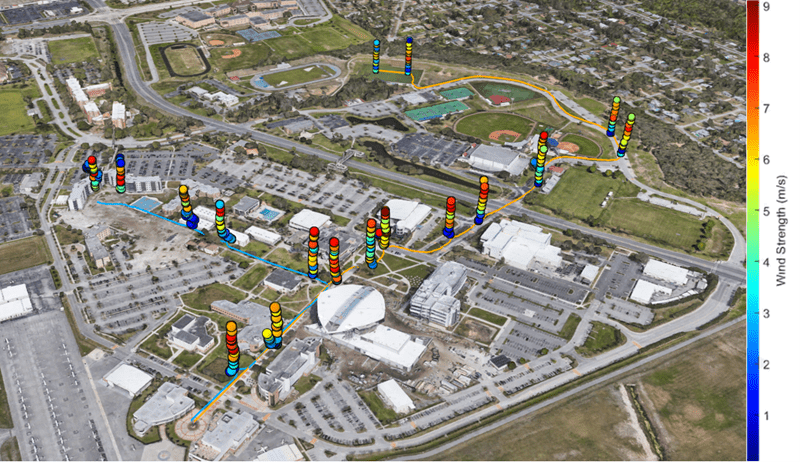
Researchers at Embry-Riddle Aeronautical University in the USA are proving the viability of the hyperlocal weather-prediction tools needed to fly autonomous systems in populated areas by flying small uncrewed aircraft systems (sUAS) along simulated delivery routes in Florida.
According to a university press release:
“Micro weather forecasting is essential with drone deliveries,” said Avinash Muthu Krishnan, a Mechanical Engineering doctoral student who helped design and build the meteorological software equipped on the drones. “With drone delivery also comes automation of drones for beyond-visual-line-of-sight flight. You need to be 100% with the success rate of the drone flying uninterrupted to and back from a destination. Without weather predictions along the route, a lot of uncertainty is added.”
The research, which started in 2020 on Embry-Riddle’s Daytona Beach Campus, endeavors to filter weather data from the National Oceanic and Atmospheric Administration and nearby ground stations through 3D models of urban environments to refine forecasts to specific locations. The team’s General Urban area Microclimate Predictions tool (GUMP) leverages machine learning and Computational Fluid Dynamics (CFD) simulations to convert computer wind flow fields into an intuitive risk map for sUAS operators.
“Think of air taxis or drone delivery and you probably think of hundreds of small aircraft flying relatively low over large metro areas,” said Dr. Kevin Adkins, associate professor in Embry-Riddle’s College of Aviation. “Without good weather products, these aircraft may be unnecessarily grounded, delaying the delivery of goods and services,” said
With most UAS weighing less than 55 pounds, even mild gusts of wind could disrupt their flight. Especially in metropolitan areas, where tall buildings can create unpredictable weather forces, more sophisticated forecasting software is needed to ensure that aircraft can operate both safely and efficiently.
For more information
https://news.erau.edu/headlines/chasing-air-taxis-eagles-simulate-drone-routes-to-advance-nasa-research
(Image: Observations from the field: Three meteorologically instrumented drones were flown along two separate paths through Embry-Riddle’s Daytona Beach Campus (the blue line traces a simulated urban package delivery route; the orange line represents a suburban delivery route). The drones measured the wind speed, along with other meteorological parameters, at increasing altitudes at each marker location. (Photo: Marc Compere)


